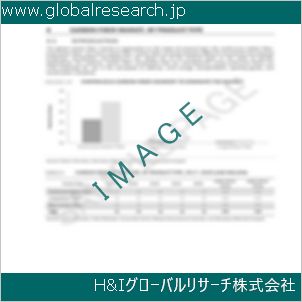Table of Contents
1 Industry Overview of Trioctylamine
1.1 Definition and Specifications of Trioctylamine
1.1.1 Definition of Trioctylamine
1.1.2 Specifications of Trioctylamine
1.2 Classification of Trioctylamine
1.3 Applications of Trioctylamine
1.3.1 Nuclear Application
1.3.2 Non-Nuclear Application
1.4 Industry Chain Structure of Trioctylamine
1.5 Industry Overview and Major Regions Status of Trioctylamine
1.5.1 Industry Overview of Trioctylamine
1.5.2 Global Major Regions Status of Trioctylamine
1.6 Industry Policy Analysis of Trioctylamine
1.7 Industry News Analysis of Trioctylamine
2 Manufacturing Cost Structure Analysis of Trioctylamine
2.1 Raw Material Suppliers and Price Analysis of Trioctylamine
2.2 Equipment Suppliers and Price Analysis of Trioctylamine
2.3 Labor Cost Analysis of Trioctylamine
2.4 Other Costs Analysis of Trioctylamine
2.5 Manufacturing Cost Structure Analysis of Trioctylamine
2.6 Manufacturing Process Analysis of Trioctylamine
3 Technical Data and Manufacturing Plants Analysis of Trioctylamine
3.1 Capacity and Commercial Production Date of Global Trioctylamine Major Manufacturers in 2023
3.2 Manufacturing Plants Distribution of Global Trioctylamine Major Manufacturers in 2023
3.3 R&D Status and Technology Source of Global Trioctylamine Major Manufacturers in 2023
3.4 Raw Materials Sources Analysis of Global Trioctylamine Major Manufacturers in 2023
4 Capacity, Production and Revenue Analysis of Trioctylamine by Regions, Types and Manufacturers
4.1 Global Capacity, Production and Revenue of Trioctylamine by Regions 2019-2024
4.2 Global and Major Regions Capacity, Production, Revenue and Growth Rate of Trioctylamine 2019-2024
4.3 Global Capacity, Production and Revenue of Trioctylamine by Types 2019-2024
4.4 Global Capacity, Production and Revenue of Trioctylamine by Manufacturers 2019-2024
5 Price, Cost, Gross and Gross Margin Analysis of Trioctylamine by Regions, Types and Manufacturers
5.1 Price, Cost, Gross and Gross Margin Analysis of Trioctylamine by Regions 2019-2024
5.2 Price, Cost, Gross and Gross Margin Analysis of Trioctylamine by Types 2019-2024
5.3 Price, Cost, Gross and Gross Margin Analysis of Trioctylamine by Manufacturers 2019-2024
6 Consumption Volume, Consumption Value and Sale Price Analysis of Trioctylamine by Regions, Types and Applications
6.1 Global Consumption Volume and Consumption Value of Trioctylamine by Regions 2019-2024
6.2 Global and Major Regions Consumption Volume, Consumption Value and Growth Rate of Trioctylamine 2019-2024
6.3 Global Consumption Volume and Consumption Value of Trioctylamine by Types 2019-2024
6.4 Global Consumption Volume and Consumption Value of Trioctylamine by Applications 2019-2024
6.5 Sale Price of Trioctylamine by Regions 2019-2024
6.6 Sale Price of Trioctylamine by Types 2019-2024
6.7 Sale Price of Trioctylamine by Applications 2019-2024
6.8 Market Share Analysis of Trioctylamine by Different Sale Price Levels
7 Supply, Import, Export and Consumption Analysis of Trioctylamine
7.1 Supply, Consumption and Gap of Trioctylamine 2019-2024
7.2 Global Capacity, Production, Price, Cost, Revenue, Supply, Import, Export and Consumption of Trioctylamine 2019-2024
7.3 USA Capacity, Production, Price, Cost, Revenue, Supply, Import, Export and Consumption of Trioctylamine 2019-2024
7.4 EU Capacity, Production, Price, Cost, Revenue, Supply, Import, Export and Consumption of Trioctylamine 2019-2024
7.5 China Capacity, Production, Price, Cost, Revenue, Supply, Import, Export and Consumption of Trioctylamine 2019-2024
7.6 Japan Capacity, Production, Price, Cost, Revenue, Supply, Import, Export and Consumption of Trioctylamine 2019-2024
8 Major Manufacturers Analysis of Trioctylamine
8.1 Manufacturer One
8.1.1 Company Profile
8.1.2 Product Picture and Specifications
8.1.2.1 Type I
8.1.2.2 Type II
8.1.2.3 Type III
8.1.3 Capacity, Production, Price, Cost, Gross and Revenue
8.1.4 Contact Information
8.2 Manufacturer Two
8.2.1 Company Profile
8.2.2 Product Picture and Specifications
8.2.2.1 Type I
8.2.2.2 Type II
8.2.2.3 Type III
8.2.3 Capacity, Production, Price, Cost, Gross and Revenue
8.2.4 Contact Information
8.3 Manufacturer Three
8.3.1 Company Profile
8.3.2 Product Picture and Specifications
8.3.2.1 Type I
8.3.2.2 Type II
8.3.2.3 Type III
8.3.3 Capacity, Production, Price, Cost, Gross and Revenue
8.3.4 Contact Information
8.4 Manufacturer Four
8.4.1 Company Profile
8.4.2 Product Picture and Specifications
8.4.2.1 Type I
8.4.2.2 Type II
8.4.2.3 Type III
8.4.3 Capacity, Production, Price, Cost, Gross and Revenue
8.4.4 Contact Information
8.5 Manufacturer Five
8.5.1 Company Profile
8.5.2 Product Picture and Specifications
8.5.2.1 Type I
8.5.2.2 Type II
8.5.2.3 Type III
8.5.3 Capacity, Production, Price, Cost, Gross and Revenue
8.5.4 Contact Information
…
9 Marketing Trader or Distributor Analysis of Trioctylamine
9.1 Marketing Channels Status of Trioctylamine
9.2 Traders or Distributors with Contact Information of Trioctylamine by Regions
9.3 Ex-work Price, Channel Price and End Buyer Price Analysis of Trioctylamine
9.4 Regional Import, Export and Trade Analysis of Trioctylamine
10 Industry Chain Analysis of Trioctylamine
10.1 Upstream Major Raw Materials Suppliers Analysis of Trioctylamine
10.1.1 Major Raw Materials Suppliers with Contact Information Analysis of Trioctylamine
10.1.2 Major Raw Materials Suppliers with Supply Volume Analysis of Trioctylamine by Regions
10.2 Upstream Major Equipment Suppliers Analysis of Trioctylamine
10.2.1 Major Equipment Suppliers with Contact Information Analysis of Trioctylamine
10.2.2 Major Equipment Suppliers with Product Pictures Analysis of Trioctylamine by Regions
10.3 Downstream Major Consumers Analysis of Trioctylamine
10.3.1 Major Consumers with Contact Information Analysis of Trioctylamine
10.3.2 Major Consumers with Consumption Volume Analysis of Trioctylamine by Regions
10.4 Supply Chain Relationship Analysis of Trioctylamine
11 Development Trend of Analysis of Trioctylamine
11.1 Capacity, Production and Revenue Forecast of Trioctylamine by Regions and Types
11.1.1 Global Capacity, Production and Revenue of Trioctylamine by Regions 2024-2029
11.1.2 Global and Major Regions Capacity, Production, Revenue and Growth Rate of Trioctylamine 2024-2029
11.1.3 Global Capacity, Production and Revenue of Trioctylamine by Types 2024-2029
11.2 Consumption Volume and Consumption Value Forecast of Trioctylamine by Regions, Types and Applications
11.2.1 Global Consumption Volume and Consumption Value of Trioctylamine by Regions 2024-2029
11.2.2 Global and Major Regions Consumption Volume, Consumption Value and Growth Rate of Trioctylamine 2024-2029
11.2.3 Global Consumption Volume and Consumption Value of Trioctylamine by Types 2024-2029
11.2.4 Global Consumption Volume and Consumption Value of Trioctylamine by Applications 2024-2029
11.3 Supply, Import, Export and Consumption Forecast of Trioctylamine
11.3.1 Supply, Consumption and Gap of Trioctylamine 2024-2029
11.3.2 Global Capacity, Production, Price, Cost, Revenue, Supply, Import, Export and Consumption of Trioctylamine 2024-2029
11.3.3 USA Capacity, Production, Price, Cost, Revenue, Supply, Import, Export and Consumption of Trioctylamine 2024-2029
11.3.4 EU Capacity, Production, Price, Cost, Revenue, Supply, Import, Export and Consumption of Trioctylamine 2024-2029
11.3.5 China Capacity, Production, Price, Cost, Revenue, Supply, Import, Export and Consumption of Trioctylamine 2024-2029
11.3.6 Japan Capacity, Production, Price, Cost, Revenue, Supply, Import, Export and Consumption of Trioctylamine 2024-2029
12 New Project Investment Feasibility Analysis of Trioctylamine
12.1 New Project SWOT Analysis of Trioctylamine
12.2 New Project Investment Feasibility Analysis of Trioctylamine
13 Conclusion of the Global Trioctylamine (CAS 1116-76-3) Industry 2024 Market Research Report
| ※参考情報 トリオクチルアミン(Trioctylamine、CAS番号 1116-76-3)は、化学的にはアミンの一種であり、特に三つのオクチル基(分子内に8炭素の直鎖アルキル基が3つ結合したもの)を持つ構造を持っています。アミンは、窒素原子が炭素原子と結合している化合物で、一般に有機化学において重要な役割を果たします。トリオクチルアミンは、特にその疎水性と界面活性作用から、様々な産業分野で利用されています。 この化合物の主な特徴の一つは、その疎水性及び親油性の特性です。トリオクチルアミンは、通常、無色から淡黄色の液体として存在し、特有の香りを持っています。この物質は、水に対してはほとんど溶解せず、オーガニックソルベントには良く溶けるため、有機合成や抽出プロセスでの利用に適しています。また、トリオクチルアミンは、氷点が低く、融点も低いため、低温環境でも安定した性質を示します。 トリオクチルアミンには、いくつかの種類がありますが、主に合成ルートによって異なる純度の製品が提供されています。一般には、純度が高いものが望まれる場合が多く、特に工業用途では及び研究用途において高純度の化合物が求められます。また、トリオクチルアミンは、他の化合物と化学反応を起こしやすく、そのため新たな機能性材料の合成にも利用されます。 用途としては、トリオクチルアミンは、特に界面活性剤や溶媒、抽出剤として多岐にわたり利用されます。化学工業においては、金属抽出や有機化合物の分離プロセスにおいて、その親油性を利用した抽出プロセスが一般的に行われています。また、トリオクチルアミンは、トリオクチルアミニウム塩などの化合物を合成するための前駆体としても用いられます。これらの塩は、さらなる反応においてカタリストや、他の化学物質の合成に寄与することができます。 さらに、トリオクチルアミンは、特に石油産業や鉱業においても活用されており、油分離プロセスや金属イオンの除去に関連する工程で重要な役割を果たしています。このような用途では、物質の純度や反応性が非常に重要視されるため、トリオクチルアミンの品質管理が求められます。 関連技術においては、トリオクチルアミンを利用したその抽出プロセスや、化合物の合成方法が研究されています。例えば、有機合成化学や触媒研究において、トリオクチルアミンは新たな反応経路の開発に貢献すると同時に、既存の技術の効率化にも寄与する可能性があります。これにより、環境に優しい化学プロセスの開発や、持続可能なリソースの利用が促進されることが期待されます。 また、トリオクチルアミンの生分解性や環境影響についても注目されています。特に有害物質の排出を抑えるための技術や、環境負荷を低減させるための開発は重要です。このため、より安全で効率的な化合物の開発が進められています。 トリオクチルアミンは、化学工業から環境技術に至るまで、さまざまな分野で利用されている重要な有機化合物です。その利点や特性を活かすことで、今後の技術革新や持続可能な開発に寄与することが期待されます。化学界におけるこの化合物の可能性は広がり続け、その利用法や研究は今後も進展していくことでしょう。 |
❖ 免責事項 ❖
http://www.globalresearch.jp/disclaimer












